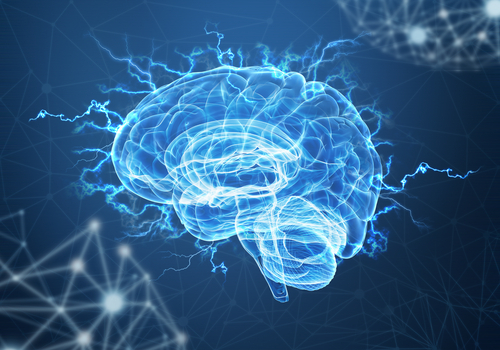Chemical-electrical Brain Signals Link More Complex Than Thought, Study Finds

The association between dopamine levels and electric brain signals called beta waves — thought to be of an opposite nature based on data from people with Parkinson’s disease — is more complex than previously thought, a study in non-human primates shows.
The data, collected through a new chemo-electric platform, highlighted that this link was dynamically regulated across different brain regions and tasks.
“What we expected is there in the overall view, but if we just look at a different level of resolution, all of a sudden the rules don’t hold,” Ann Graybiel, PhD, the study’s senior author and a professor at MIT’s McGovern Institute for Brain Research, in Cambridge, Mass., said in a MIT news story.
“It doesn’t destroy the likelihood that one would want to have a treatment related to this presumed opposite relationship, but it does say there’s something more here that we haven’t known about,” Graybiel said.
Further studies, including those using the newly presented tool, are needed to better understand these associations, the researchers said.
Any new data uncovered will likely help improve the monitoring and treatment of dopamine-related diseases, such as Parkinson’s, they added.
Their findings were reported in the study, “Dopamine and beta-band oscillations differentially link to striatal value and motor control,” published in the journal Science Advances.
Electrical and chemical signals in the brain are both key to nerve cell communication. But there is a paucity of tools to allow the simultaneous measure of these signals in primates, including humans. That lack of tools, and of the more sophisticated research they could provide, have prevented scientists from understanding how these signals work together to control brain functions, moods, and actions.
“Considering electrical signals side by side with chemical signals is really important to understand how the brain works,” said Helen Schwerdt, PhD, the study’s first author and a post-doctoral researcher in Graybiel’s lab.
In people with Parkinson’s, dopamine — one of the major chemical messengers in the brain — is progressively lost in the striatum, a part of the basal ganglia, which is the dopamine-dependent brain region that controls movement.
As dopamine levels and motor function decline in Parkinson’s patients, the activity of a specific type of brain wave called beta reaches higher-than-normal levels. That event is partially reverted with dopamine replacement therapy. Of note, beta wave activity is usually detected in brain regions that control movement when a person is paying attention or planning to move.
Based on these findings, a coordinated opposite association between dopamine levels and beta wave activity is currently considered a rule in basal ganglia function. Indeed, this association is so strongly held that clinical trials are already underway to explore the use of beta wave monitoring as an inverse measure of dopamine levels and a measure of patients’ response to deep brain stimulation (DBS).
“However, the diagnostic power of these beta signals and their relationship to dysregulated dopamine levels remain unresolved,” the researchers wrote.
Now, a team of MIT researchers led by Graybiel has provided evidence challenging the previously assumed dopamine-beta rule in the basal ganglia.
Using their newly developed chemo-electric platform, the researchers were able — for the first time — to simultaneously and precisely measure dopamine release and electrical activity in real-time in the striatum of rhesus monkeys, a non-human primate, during a particular task.
The task consisted of monkeys directing their gaze to a left or right target, displayed on a screen in front of them, to receive small or large amounts of a food reward.
“These recordings yielded measures of reward value and movement control, aspects of which are known to be associated with dopamine and [beta wave activity] and are compromised in Parkinson’s disease,” the researchers wrote.
Results showed that dopamine levels did increase following beta wave activity reductions — but only in certain parts of the striatum and during certain tasks. In other conditions, these signals showed similar, instead of opposite, trends.
Overall, dopamine-beta associations were found to depend on the domain of the striatum, the reward value, the particular movement performed by the animal, and the animal’s past task experience.
These data suggest that an opposite association between these two signals “does not appear to be a default mode of operation in the brain, specifically in the striatal regions that we explored,” the researchers wrote.
Instead, such association “could be uniquely manifested in specific brain sites and states, such as in pathology [disease] (e.g., Parkinson’s disease), which is an issue that must be explored in future investigations with relevant animal models,” they wrote.
While the team plans to assess how the two types of signals relate to one another across distinct parts of the brain and under different behavioral conditions, they hope their tool also will prove useful to other researchers.
“Our coordinate chemo-electric platform should provide a means in future work to track these signals coordinately over disease progression, helping to identify key [disease-associated neurological] features to target in treating Parkinson’s disease and other conditions in which dopamine dysfunction occurs,” the team wrote.
Graybiel also noted that “as these methods in neuroscience become more and more precise and dazzling in their power, we’re bound to discover new things.”






